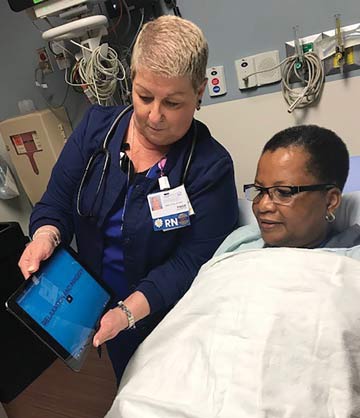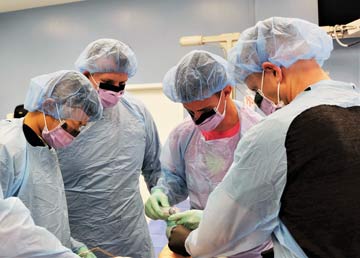As the nation continues to battle the opioid crisis, surgical facilities have embraced multimodal, opioid-sparing pain management techniques. That’s great news for patients. In the case of Manhattan Eye, Ear & Throat Hospital (MEETH), the shift to multimodal treatments has also boosted the operational efficiencies. It’s a great example of how patient care and a facility’s bottom line can improve in tandem. It’s also why MEETH is the winner of this year’s OR Excellence Award for Pain Control.
MEETH runs an ASC that performs orthopedic surgeries such as foot, ankle, shoulder and knee procedures. Because of the intense pain these surgeries can cause, the hospital decided to study alternative non-opioid treatment methods. Opioid use, of course, leads to prolonged recovery times and postoperative nausea and vomiting, which can consume a PACU bay’s time and resources.
Over a nine-month period (April 1, 2019, to January 1, 2020), MEETH performed 305 orthopedic procedures. About 20% of these patients participated in an internal study by receiving peripheral nerve blocks in a “block room” located in the PACU prior to going into the OR.
Blocks had traditionally been performed in the OR, so the PACU nurses needed to learn how to adhere to policies and procedures for nerve block administration. The attending anesthesiologist or a CRNA still performs the block, but a nurse assists, monitors and documents. A flow sheet was developed for the nurses to follow, and additional education was provided. A nerve block cart was created to ensure needed supplies are readily available.
“This was a very different world for [PACU nurses], where they have the patient prior to the procedure,” says Nurse Educator Daria Ahsanov, BSN, RN. “The flow sheet shows them what to do.”
To make the procedure even smoother, a separate block chart is used for documentation. “We created a record specifically for these pre-op blocks that contains only the information necessary for record-keeping,” says Ms. Ahsanov.
Kristen Floersheimer, BSN, MSN, FNP-BC, a nurse practitioner who works in the PACU, appreciates the opportunity to see patients before and after their surgeries. “It helps with the continuity of care,” she says. “We’re caring for patients preoperatively and getting an idea of what their pain level is before we place the block. When we see them postoperatively, we’re able to treat their pain in a more personalized and effective way.”
Because the PACU nurses assist with the blocks, the OR staff has one less thing to worry about, as well as one less variable that could delay cases. “When patients arrive in the OR, we can start the procedure instead of placing the block,” comments Ms. Ahsanov, who says that’s provided a significant boost to case efficiencies.
.svg?sfvrsn=be606e78_3)


.svg?sfvrsn=56b2f850_5)